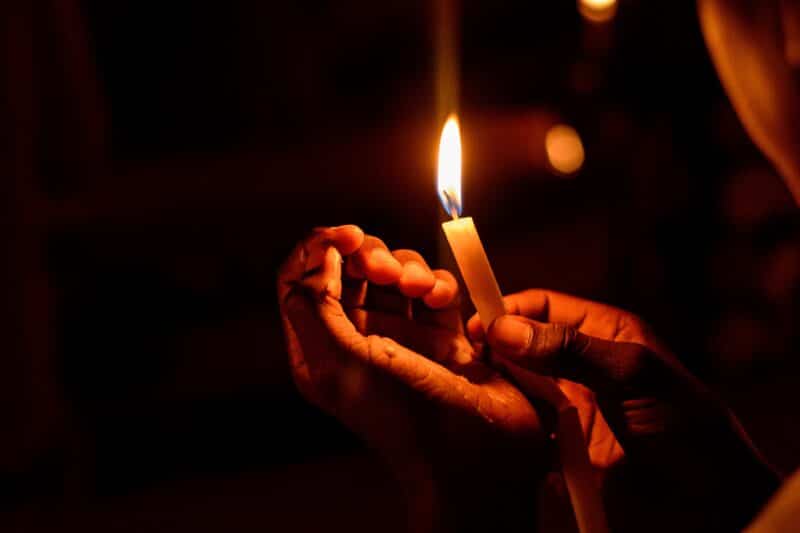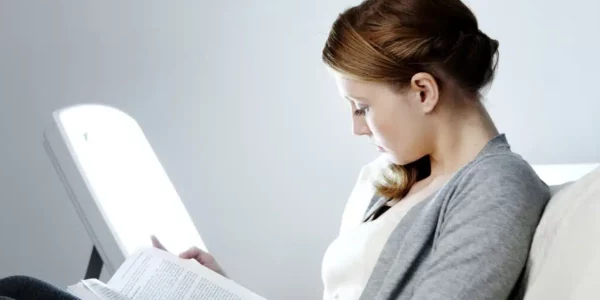FINDING LIGHT IN THE DARKNESS

By Linda-Marie McDonald
RN , BN Health Content Writer
January 15, 2024
The holiday season has come and gone. The bills have landed on your lap. The days are short, the nights long and cold. The Christmas spirit has flown away. You may even feel blown away. Sad even. SAD is more widespread than many think.
SEASONAL AFFECTIVE DISORDER (SAD)
WHAT IS IT?
SAD, or Seasonal Affective Disorder, is a type of depression that occurs during the same season every year, typically in the late fall and wintertime. Winter depression is another term used for SAD.
CAUSE
Researchers believe the connection between SAD and the winter season is the decrease in natural daylight.
This can affect our melatonin (sleep hormone), serotonin (feel-good hormone), and vitamin D levels, all associated with symptoms of SAD.
When it becomes dark, the brain naturally releases melatonin, which tells us it is time to sleep.
When there are extended periods of darkness, the cues to sleep get confused.
WHO DOES IT AFFECT?
SAD can affect anyone.
People living in the northern hemisphere are most at risk during the late fall and winter months with decreased natural sunlight and extended periods of darkness.
Interestingly, research has shown that it affects more women than men. The reason for this is not yet clear.
SIGNS AND SYMPTOMS
Sleep
A significant symptom of SAD is the disruption of sleep. When the brain registers that it is dark outside, it thinks it is bedtime (even if it is only 5 pm).

Courtesy of Kinga Howard
It then releases melatonin, which, in turn, makes us sleepy. Our circadian rhythm and external and internal cues for bedtime can become confused.
Common signs of sleep disruption are:
- Increased sleep hours – falling asleep earlier, sleeping longer than usual, and having afternoon naps.
- Sleep deprivation – caused by insomnia (having trouble falling asleep) as well as waking up very early in the morning.
Appetite
A change in appetite and our relationship with food can commonly show up as:
- An increased appetite and seeking food high in carbohydrates and calories (comfort foods). This frequently ends with weight gain.
- A reduced appetite and no longer finding pleasure in food – often resulting in weight loss.
Mood
SAD can noticeably influence one’s mood or feelings.
- Fatigue
- Feeling sad and depressed much of the time
- Social withdrawal
- Lowered self-esteem
- No longer finding pleasure or interest in activities.
A person can have one or two of these symptoms and be able to manage them – while others have symptoms so intense that they are no longer able to function normally.
ASSESSMENT
If you are struggling to cope with these symptoms, it is vital to get yourself assessed by a medical or mental health care professional.
What is essential is that you do not self-diagnose.
Qualified healthcare professionals will carefully consider other reasons for your symptoms, such as medication side effects or physical/medical problems.
Once a diagnosis has been established, they are better positioned to support and guide you towards feeling better.
If you do receive a diagnosis of SAD – hopeful treatments and support are available.
TREATMENT
Bright Light Therapy (BLT)
BLT is a technique utilizing bright lights to imitate sunlight within a precise timeline.

B.Boissonet/Getty Images
Its purpose is to help people reset their biological or circadian rhythm.
- The standard BLT is exposure to bright light at 10000 lux for seven days/per week for 30 minutes before 8 am.
- Studies have shown that BLT, used for over 30 years, is highly effective in treating SAD symptoms.
Most people elect to try this treatment first before considering talk therapy or medication.
Ask your doctor or health care provider for guidance in receiving this treatment if appropriate.
Talk therapy (Psychotherapy)
Talking it out and voicing your feelings to a qualified counselor or psychologist can go a long way in feeling lighter.
A mental health professional will also be able to direct you to resources and provide strategies for coping.
Support Group
Joining a support group can be of great comfort as you work towards total wellness, as a surprising number of participants can relate to your feelings and thoughts while living through the dark, cold weather.
Either way, mental health support, either individually or in a group setting, can be beneficial for many struggling with symptoms of SAD.
Self-Care
During those long winter months, taking care of yourself (self-care) is more important than ever.
Examples of self-care can include:
- Getting outside every day during sunlight hours – outdoor exercising is ideal (even if it is just to the mailbox and back)
- Eating well-balanced meals
- Turning off your phone for an hour and reading a book instead
- Practicing gratitude
- Watching an enjoyable movie (that you select)
- Reach out to a friend to talk or simply go for a coffee
Medication
Considering medications (often antidepressants) as a treatment is often the last option for many people.
However, it may be a highly effective treatment for those needing extra coping support.

Courtesy of Sam Rana
The journey back to springtime may feel long, lonely, and challenging at times – however, you are not alone in this.
Treatment and support are available to help you get back to feeling well again.
Start with a visit to your healthcare professional for help and guidance.
TAKE AWAY – SEASONAL AFFECTIVE DISORDER (SAD)
- Symptoms are linked to a lack of natural sunlight and long periods of darkness.
- People in the northern hemisphere are particularly vulnerable.
- Common symptoms are low energy, feelings of sadness, and depression.
- There are effective treatment options available.
- Talk to your healthcare provider for solutions that can work for you.
